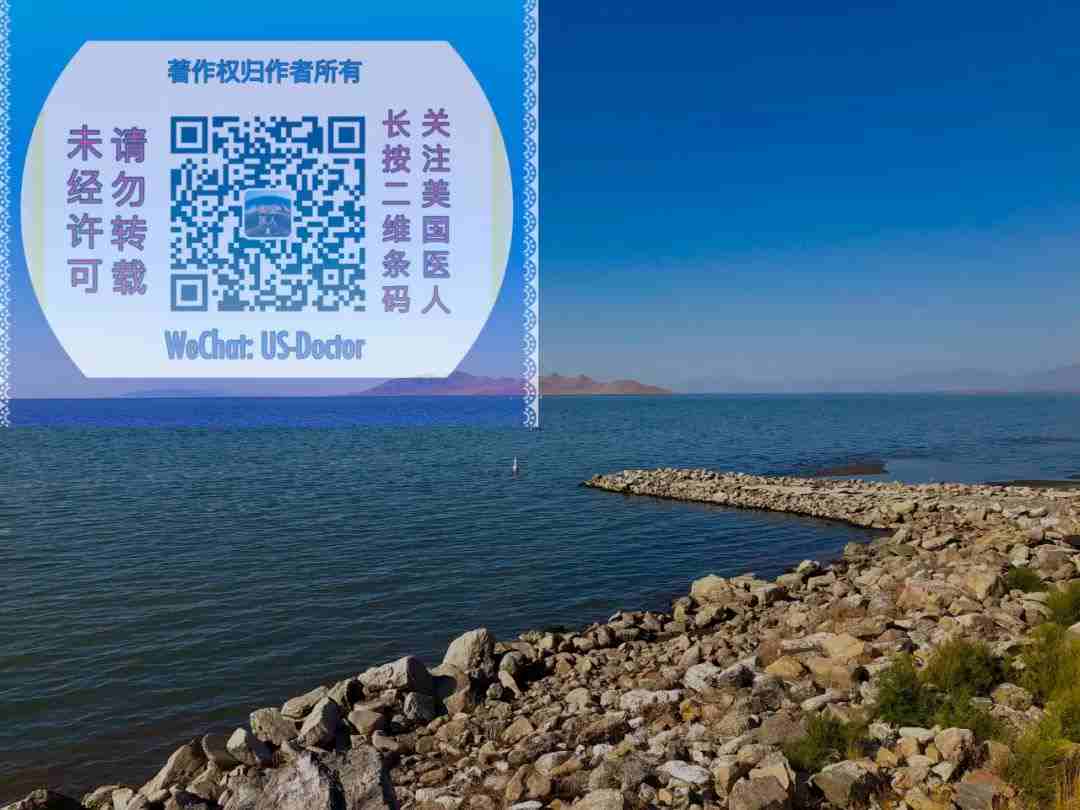JAMA:专家关于COVID-19-雷姆昔韦,疫苗等方面的讨论



专家关于COVID-19-雷姆昔韦,疫苗等方面的讨论
风城黑鹰编译
《 JAMA Live Highlights》收录了Howard Bauchner(医学博士),JAMA网络主编在直播采访中的评论。他与临床,公共卫生和健康政策专家的讨论重点是与冠状病毒病-19(COVID-19)大流行相关的关键问题。为了清晰起见,已对注释进行了编辑。
JAMA Live Highlights features comments from livestream interviews by JAMA Network Editor in Chief Howard Bauchner, MD. His discussions with experts in clinical care, public health, and health policy focus on critical issues related to the coronavirus disease 2019 (COVID-19) pandemic. Comments have been edited for clarity.
Rochelle Walensky,医学博士,MPH
马萨诸塞州总医院传染病科主任
关于气溶胶与飞沫:所以真正的问题是颗粒的大小-液滴为5到10微米。气溶胶小于5微米。而且我们认为,严重的急性呼吸系统综合症冠状病毒2(SARS-CoV-2)是飞沫。但是,现在已经进行了足够的研究,并且有足够的案例表明其中也可能存在一些气溶胶,而不仅仅是大颗粒。它也有一些小颗粒。关于这一点,我想提出一个重要的观点,即当我们在医疗保健中考虑飞沫VS.气溶胶时,我们认为是口罩与N95呼吸器。我只想清楚一点,这并不意味着我们所有人都需要在N95。我认为,这一点很重要。在7月6日有关空气传播的信函中,甚至世界卫生组织也没有要求使用N95。它要求更多的通风,空气过滤和减少拥挤情况。
关于抗病毒药雷姆昔韦:我想引用安东尼·福西博士的话,它是一个有实力的一分球,但不是本垒打。但是现在,对于那些还不严重得需要地塞米松病的人来说,却是我们最好的选择之一。因此,这是一个连续性的东西。你来医院是因为你需要氧气。那是在您发生所有炎症之前,这是使用抗病毒药的好时机,而这是使用地塞米松的机会可能很小。如果您病情严重,那么您的炎症免疫反应让您住进了重症监护病房(ICU),这可能就是使用地塞米松的时候了。而且,事实上,这已经证明了雷姆昔韦还没有带来死亡率方面的好处。对我来说重要的一件事是这些药物的获取和成本。因此,地塞米松便宜。 10天的疗程可能不到50美元。可以得到的;每个人都可以得到它。而雷姆昔韦,与之相比就少了。
Rochelle Walensky, MD, MPH
Chief of the Division of Infectious Diseases, Massachusetts General Hospital
On aerosols vs droplets: So the real issue is the size of the particle—droplets being 5 to 10 microns; aerosols being anything less than 5 microns. And we believe that severe acute respiratory syndrome coronavirus 2 is droplets. However, there've been enough studies now and enough cases that demonstrated that there's probably some aerosol in there as well, that it's not just big particles. It's some small particles too. I want to make the important point with regard to this that when we in health care think about droplets vs aerosols, we think surgical mask vs N95 respirator. I just want to be clear that this does not mean we all need to walk around in N95s. And that, I think, is a really important point to make. In the July 6 letter about airborne transmission, even the World Health Organization did not ask for N95s. It asked for more ventilation, air filtration, and decreased crowding.
On the antiviral drug remdesivir: It is kind of, I think to quote Dr Anthony Fauci, a solid single but not a home run. But right now, it’s one of the best things that we have for people who are not quite as sick as meriting dexamethasone. So this is sort of a continuum. You come to the hospital because you need oxygen. That's kind of the time to use the antiviral, before you have all the inflammation and probably less of the time to use dexamethasone. If you progress to a place where you're really super sick, you have the inflammatory immunity responses that land you in the intensive care unit (ICU), that's probably the time to use dexamethasone. And, in fact, that has demonstrated a mortality benefit that we haven't yet seen with remdesivir. One thing that's important to me is the access and cost of these drugs. So, dexamethasone is cheap. It's probably less than $50 for the 10-day course. It's accessible; everybody can get it. Remdesivir, less so.
迈克尔·奥斯特霍尔姆(MPH)博士
明尼苏达大学传染病研究与政策中心主任
关于缺乏准备:我们面临的全面挑战,不只是一个政党的问题,这不只是政府的问题,也不是哪一个学科的问题:每个人都缺乏创造力性的想象力, 以至于想象不到我们今天所发生的事情。
关于COVID-19的传播:我更喜欢类比森林大火。无论在哪里有可燃烧的树木-(即易感人类)-都会找到火。
关于接触者跟踪:这是一次性接触者的跟踪,除了告诉接触者待在家2周,不要上班之外,我们没有其他任何东西可提供。我的意思是,有了HIV,我们能为人病人提供AZT [zidovudine]。我们在阻止病毒传播的过程中面临着一些实际挑战。我认为距离,距离和距离确实是我们唯一的关注重点,并且事实证明它是成功的。
关于COVID-19疫苗:疫苗只是疫苗。在接种疫苗之前没什么。我认为这就是我们必须了解如何实现这一目标的地方。我担心供应链。现在有些人会想要数十亿个剂量的小瓶。玻璃公司可以生产这么多吗?我们将如何交付它?目前,“经线速度行动”正在谈论军方将其交付。我可以从许多公共卫生同事那里告诉您,这不是一个好主意。
从2009年甲型H1N1流感大流行的教训中:美国卫生与公众服务部(HHS)出于良好的意愿,一直向公众展示有希望的流感疫苗。当由于病毒传播增加的挑战而无法按时到达时,当人们非常沮丧和担忧时,它实际上损害了HHS的信誉。我在这里担心,当COVID-19疫苗问世时我们承诺的过多,因为我认为我们应为失败做好准备。
Michael Osterholm, PhD, MPH
Director of the Center for Infectious Disease Research and Policy, University of Minnesota
On the lack of preparedness: The challenge we've had across the board, and it's not just a political party, it's not an administration, it's not any one discipline: everyone lacked creative imagination to imagine that where we're at today could actually happen.
On the spread of COVID-19: I liken it more to a forest fire. Wherever there is wood to burn—susceptible humans—it’s going to find it.
On contact tracing: This is the one time in contact tracing we don't have anything to offer anyone other than to stay in your place for 2 weeks and don't go to work. I mean, with HIV we were able to offer people AZT [zidovudine]. We have some real challenges of what we do to stop this transmission short of distancing. I think distancing, distancing, and distancing is really the only focus we have, and it has proven to be successful.
On COVID-19 vaccine: A vaccine is only a vaccine. It's nothing until it's a vaccination. And I think that's where we're going to have to understand how we’re going to deliver this. I worry about supply chains. There are people who will want billions of dose vials right now. Can the glass companies make them? How are we going to deliver it? Right now Operation Warp Speed is talking about the military delivering it. I can tell you from many of my colleagues in public health, that is not seen as a good idea.
On lessons from pandemic 2009 influenza A(H1N1): The US Department of Health and Human Services (HHS), with good intention, kept promising influenza vaccine to the public. And when it didn't arrive on time because of challenges growing the virus, when people got very upset and concerned, literally it threatened the credibility of HHS. I worry here that we don't over promise when a COVID-19 vaccine might come because I think that we will set ourselves up for failure.
罗伯特·雷德菲尔德,医学博士
美国疾病预防控制中心主任
关于遮罩:我认为遮罩有效的数据已很明显-无论是面部遮罩,简单的手术口罩,还是临床上使用的口罩。如果美国公众现在都接受掩蔽,而我们确实做到了严格的执行,我们就可能更像德国人,当他们说每个人都应隔离时,他们非常合作。当我们提倡隔离时,我们可能只有不到一半的美国公众会这样做。如果我们现在可以让每个人都戴口罩,那么我确实认为在接下来的4、6、8周内,我们可以控制这一流行病。
Robert Redfield, 医学博士
Director of the US Centers for Disease Control and Prevention
On masking: I think the data are clearly there that masking works—whether it’s a face covering, whether it’s a simple surgical mask, or whether it’s masks that are used in the clinical setting. If the American public all embraced masking now, and we really did it rigorously, maybe more like the Germans who when they say everyone isolate, I think they got a lot of cooperation. When we isolated, we probably had less than half the American public do it. If we could get everybody to wear a mask right now, I really do think over the next 4, 6, 8 weeks, we could bring this epidemic under control.
Flavia Machado,医学博士
巴西圣保罗联邦大学麻醉学重症监护室主任,疼痛和重症监护室
关于有冲突的优先事项:
我们需要为已经发生的新现实做好准备。例如,在我们医院,如果您有COVID-19,您将获得ICU病床。但是,如果您是一个非COVID患者,那么您获得ICU床位将更加困难。因此,在拥有2条轨道(COVID和非COVID)的医院中,现在非COVID的情况越来越糟。择期手术也是需要的,因此我们开始再次转向非COVID。而且我们需要为此做好准备,而不是2、3或4个月,而要等到疫苗广泛可用为止。因此,我想说,在未来1或2年中,我们将需要学习如何使用COVID和非COVID双轨。而且,我们需要制定有关测试患者是否接受择期手术的传播的新规则,因此拥有2条轨道的挑战将长期存在。
Flavia Machado, MD, PhD
Chief of the Intensive Care Sector of the Anesthesiology, Pain, and Intensive Care Department at the Federal University of São Paulo, Brazil
On conflicting priorities: We need to be prepared for the new reality, which is already happening. For instance, in our hospital if you have COVID-19 you will get an ICU bed. But if you have a non-COVID patient, it will be much more difficult to get an ICU bed. So in hospitals where you have the 2 tracks—COVID and non-COVID—now things are getting worse for the non-COVID. The elective surgeries are happening again, so we are starting to move again to the non-COVID. And we will need to be prepared for this, not for 2 or 3 or 4 months, but until a vaccine is available broadly. So I would say, in the next 1 or 2 years, we will need to learn how to have COVID and non-COVID tracks. And we need to have new rules about testing patients for transmission for elective surgery, so the challenges of having the 2 tracks are going to be present for a long time.
Kalpalatha Guntupalli,医学博士
贝勒医学院本陶布医院肺,重症监护和睡眠医学科主任
关于皮质类固醇地塞米松:自从地塞米松的试验从英国出来以来,这种方法迅速流行。我们对这种药物很熟悉。我们已经使用了它,但没有看到太多副作用。而且,即使有副作用-我们知道会发生什么。像抗病毒药那样,我们对它们并不熟悉。我认为我们对此很熟悉。因此,我认为在过去几周中对患者有所作为的是地塞米松。如果他们需要补充氧气或血氧饱和度低于94%,则考虑推荐使用在临床试验中用的地塞米松6 mg。
关于COVID-19大流行的独特之处:这是我们第一次看到相同的疾病正在整个医院蔓延。我记得在使用H1N1时,我们有36名患者使用了16张病床。但是在这里,我们拥有整个医院,例如纽约,即使在我们这个地方,也有100名患者患的是同一种疾病。
第二件事是我们什么时候最后一次看到自己一些朋友受到影响?我的意思不是因为他们患有MI(心肌梗塞)或胆囊之类的东西。他们在社区或工作时受到病毒感染。
第三件事是,当危机,如医疗危机发生时,您想自愿参加,但是却不能参与,因为[自己的医院]需要您?我记得我们遇到困难的时候,我有朋友打电话给我,说:“我们可以过来为您做点什么吗?”他们确实来了并提供帮助。但是在这里,您知道,我无法将我们的人员送往纽约,因为我们不知道什么时候我们自己的病例会激增,或者他们回来时是否会染上这种疾病,我们将如何处理?所以我认为这其中的一些是独特的。
我们什么时候看到运动场变成了医院或中央公园?我认为这是百年一遇。从某种意义上说,作为其中的一个核心部分,我认为我们应该睁大眼睛[并环顾四周]。不只是治疗病人这一项,在很多方面都有很多事情要做。看实习生他们以惊人的敬业精神管理着这一浪潮。我很自豪。
Kalpalatha Guntupalli, MD
Chief of the Pulmonary, Critical Care, and Sleep Medicine Section, Ben Taub Hospital, Baylor College of Medicine
On the corticosteroid dexamethasone: Since the trial with dexamethasone came out of England, that has caught on quite rapidly. We’re familiar with the drug. We have used it, and we don’t see that many side effects. And also, the side effects—we know what to expect. It's not like some other drugs maybe that we are trying, like antivirals—we're not so familiar with it. I think we're familiar with this. So I think the one that has made a difference in the last few weeks, I would say is the dexamethasone for patients. If they're requiring any supplemental oxygen or the oxygen saturation is less than 94% on room air, they're considering giving dexamethasone 6 mg that they recommended in the trial.
On what’s unique about the COVID-19 pandemic: This is the first time when we are seeing that the same disease is filling the whole hospital. I remember with H1N1, we had 36 patients for 16 beds. But here we have the entire hospital, like New York and even in our place, 100 patients are in the hospital that have one disease.
Second thing is when is the last time we have seen that some of your friends are affected? I mean not because they had an MI [myocardial infarction] or gallbladder or something. They are affected by contracting it, either from the community or from work.
And the third thing is, when was there a crisis, a medical crisis, that you wanted to volunteer for, but you couldn't because you are needed in your [own hospital]? I remember when we had difficulties. I had friends calling me, saying, “Can we come and do something for you?” And they did come and help. But here, you know, I can't send our people to New York because we don't know when we're going to surge or if they contract the disease and come back, how are we going to manage? So I think some of those are unique.
And when did we see the sports arenas become hospitals, or Central Park? I think this is a once-in-a-century occurrence. And in some ways, I think being a central part of this, I think we should keep our eyes open [and look around us]. It's not just treating patients; there's a lot going on, on so many fronts. Look at the interns. They are managing this surge with amazing professionalism. I am so proud.
Article Information
August 5, 2020
Experts Discuss COVID-19—Remdesivir, Vaccines, and More
Article Information
JAMA. Published online August 5, 2020. doi:10.1001/jama.2020.15067
Editor’s Note: For a complete list of livestream interviews by JAMA Network Editor in Chief Howard Bauchner, MD, that focus on the coronavirus disease 2019 (COVID-19) pandemic, visit Conversations With Dr Bauchner.

最新评论
推荐文章
作者最新文章
你可能感兴趣的文章
Copyright Disclaimer: The copyright of contents (including texts, images, videos and audios) posted above belong to the User who shared or the third-party website which the User shared from. If you found your copyright have been infringed, please send a DMCA takedown notice to [email protected]. For more detail of the source, please click on the button "Read Original Post" below. For other communications, please send to [email protected].
版权声明:以上内容为用户推荐收藏至CareerEngine平台,其内容(含文字、图片、视频、音频等)及知识版权均属用户或用户转发自的第三方网站,如涉嫌侵权,请通知[email protected]进行信息删除。如需查看信息来源,请点击“查看原文”。如需洽谈其它事宜,请联系[email protected]。
版权声明:以上内容为用户推荐收藏至CareerEngine平台,其内容(含文字、图片、视频、音频等)及知识版权均属用户或用户转发自的第三方网站,如涉嫌侵权,请通知[email protected]进行信息删除。如需查看信息来源,请点击“查看原文”。如需洽谈其它事宜,请联系[email protected]。